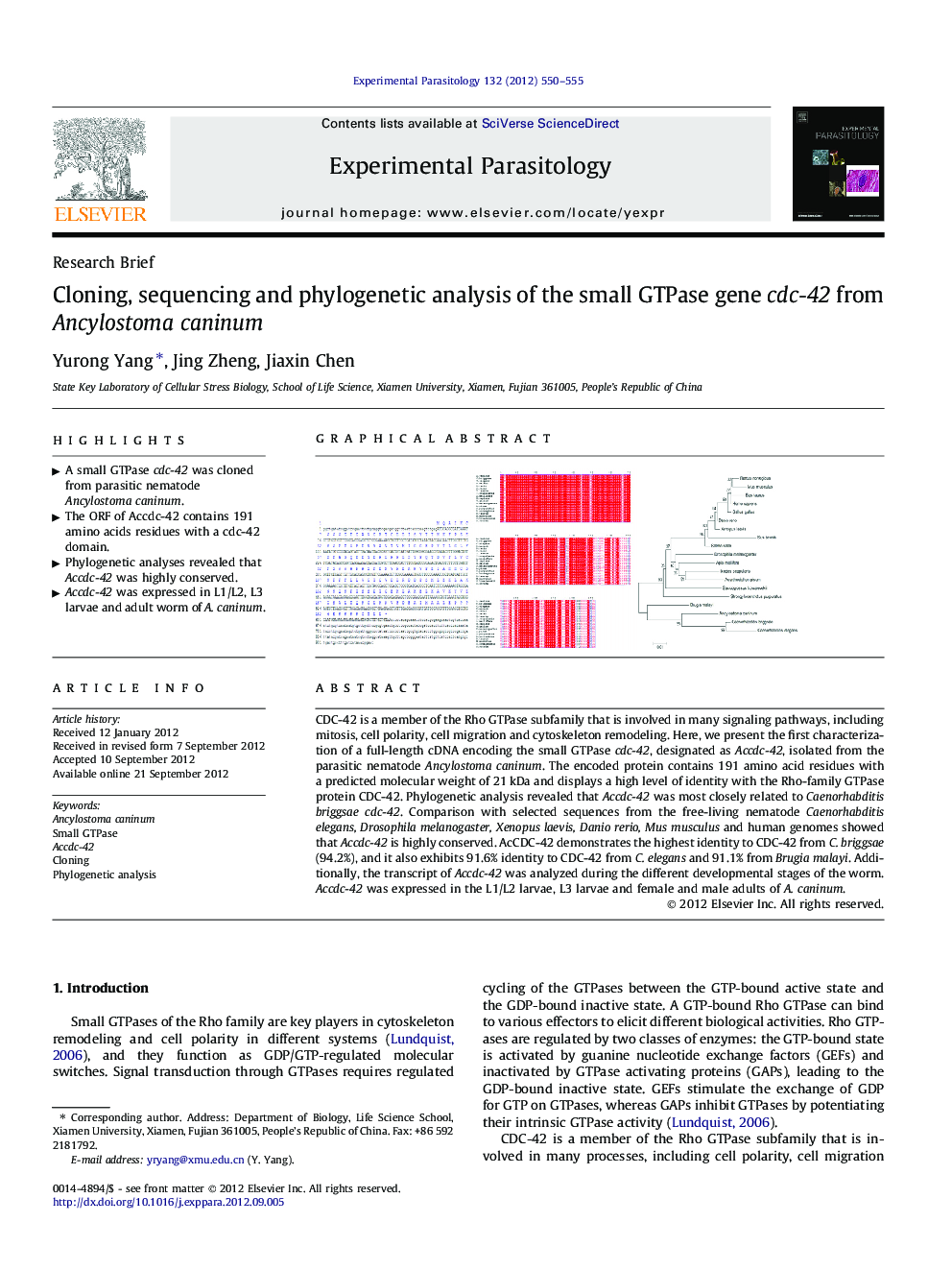| Article ID | Journal | Published Year | Pages | File Type |
|---|---|---|---|---|
| 6291485 | Experimental Parasitology | 2012 | 6 Pages |
CDC-42 is a member of the Rho GTPase subfamily that is involved in many signaling pathways, including mitosis, cell polarity, cell migration and cytoskeleton remodeling. Here, we present the first characterization of a full-length cDNA encoding the small GTPase cdc-42, designated as Accdc-42, isolated from the parasitic nematode Ancylostoma caninum. The encoded protein contains 191 amino acid residues with a predicted molecular weight of 21Â kDa and displays a high level of identity with the Rho-family GTPase protein CDC-42. Phylogenetic analysis revealed that Accdc-42 was most closely related to Caenorhabditis briggsae cdc-42. Comparison with selected sequences from the free-living nematode Caenorhabditis elegans, Drosophila melanogaster, Xenopus laevis, Danio rerio, Mus musculus and human genomes showed that Accdc-42 is highly conserved. AcCDC-42 demonstrates the highest identity to CDC-42 from C. briggsae (94.2%), and it also exhibits 91.6% identity to CDC-42 from C. elegans and 91.1% from Brugia malayi. Additionally, the transcript of Accdc-42 was analyzed during the different developmental stages of the worm. Accdc-42 was expressed in the L1/L2 larvae, L3 larvae and female and male adults of A. caninum.
Graphical abstractDownload full-size imageHighlights⺠A small GTPase cdc-42 was cloned from parasitic nematode Ancylostoma caninum. ⺠The ORF of Accdc-42 contains 191 amino acids residues with a cdc-42 domain. ⺠Phylogenetic analyses revealed that Accdc-42 was highly conserved. ⺠Accdc-42 was expressed in L1/L2, L3 larvae and adult worm of A. caninum.
